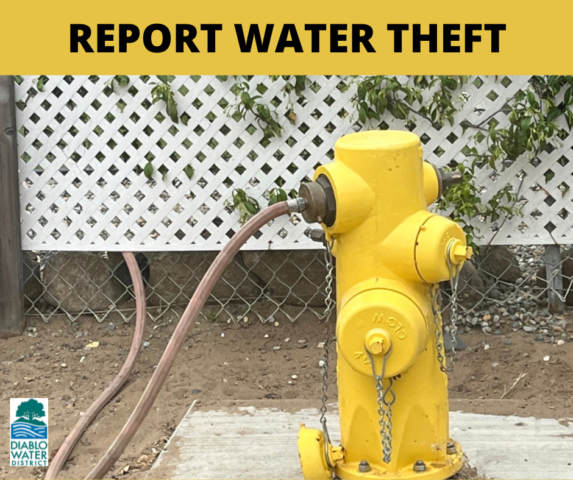Water Line Maintenance - Hydrant Flushing
Maintaining our fire hydrants is not only critical for fire protection, but also for ensuring the highest quality water supply for our customers. Hydrant flushing is an operation that is essential to clearing out sediment and other buildup that naturally accumulates in our water system over time.
WE ARE CURRENTLY PERFORMING FIRE HYDRANT MAINTENANCE IN THE BELOW AREAS:
None scheduled at this time.

Please notify us immediately if you see anyone other than a District employee connected to a fire hydrant without a meter. This may include landscapers, contractors, pool filling companies, etc. We are available 24/7 at (925) 625-3798.
Frequently Asked Questions
Why does the District flush fire hydrants?
The flushing exercise maintains proper flow throughout our distribution systems and identifies blockages or areas in need of maintenance and repair. It also maintains adequate flow for firefighting. Flushing is a preventive exercise necessary to maintain the integrity of the water system and allows us to ensure the hydrants are in proper working order.
What happens during hydrant flushing?
Flushing the system uses a forceful release of water to clear any sediment or buildup in the pipes. Customers may notice reduced water flow and pressure while flushing is in progress.
When does flushing normally occur?
Our goal is to plan the hydrant flushing schedule to minimize impact and inconvenience to our customers. Due to the nature of this maintenance, it is difficult to determine the exact day we will flush. Scheduled areas of flushing will be posted on our website and Facebook page. All potentially affected customers will receive a notice on their door at least 24 hours in advance.
Flushing may also occur after a repair on a water line in our system. All customers are notified as soon as possible in the event of an emergency repair.
Is flushing wasting water?
Flushing takes about 10-15 minutes. Although you will see water flowing for this length of time, the average amount of water used in a flushing exercise is 14,000 gallons, which is the same amount that an average household uses during the summer.
It may seem like water is being wasted, but most of the water flushed will recharge our groundwater aquifer.
Will my water be affected by the flushing?
During flushing, customers may experience reduced water pressure and flow, as well as temporary changes to the aesthetics of the water. If water flow remains low after flushing, please check your faucet screens for sediment or debris.
After flushing, it is normal to experience discoloration, odor, or notice sediment or debris in your water. If this occurs, run your hose and then faucet indoors using cold water until the water runs clear.
What do I do if I am still experiencing changes in my water after flushing?
If water pressure or discoloration remains after several hours, and flushing the water lines as described above, please call our office at (925) 625-3798.
Public service is at the heart of everything we do. We value our customers and remain diligent in customer education and communication. We encourage our customers to reach out to us with any questions or concerns, and appreciate your cooperation during these maintenance activities.



